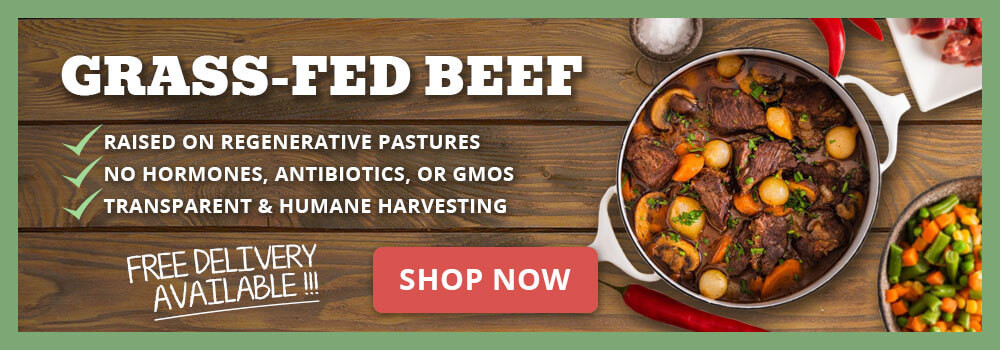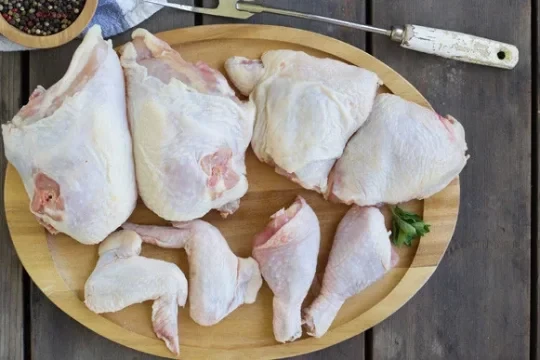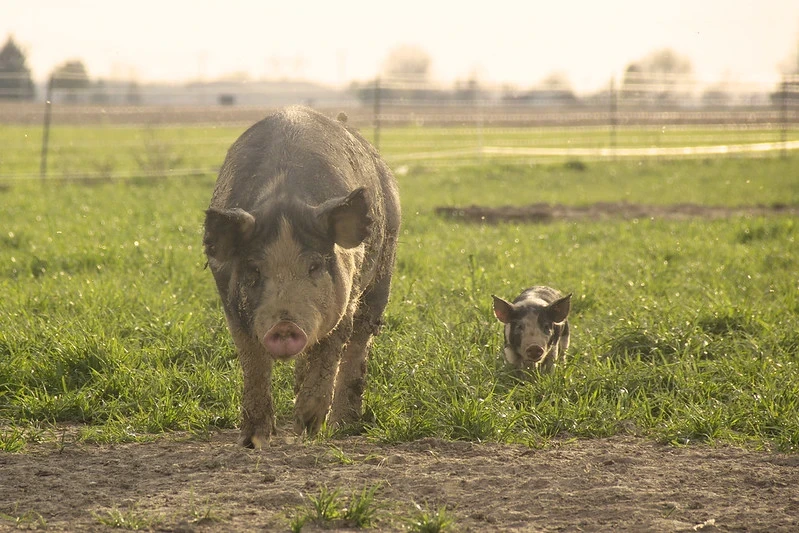How to Make Homemade Cottage Cheese
posted on
May 4, 2020

Cottage cheese is a soft, fresh cheese that has a mild and slightly acidic flavor. It's low in calories and packed with protein while being made from the curds of cow's milk. It is unique in that it has no rind and is not made to be ripened or aged.
Before we get started, did you know that it's believed to be called "cottage cheese" because it was made in cottages from milk left over after making butter, which proves that it's simple and that anyone can make it!
You can enjoy it on its own or in several recipes. Since it's such a mild cheese, it complements almost any flavor! Once you've made your homemade cottage cheese, you can put it in several sweet recipes such as with berries or bananas, or with more savory ingredients such as tortilla chips or roasted peppers. You can try stirring in some chopped tomatoes and red onions, then season it with black pepper.
You can even use it in pasta dishes. Homemade cottage cheese is extremely versatile and delicious!
If you don't know a homemade cottage cheese recipe or don't know how to start, you're not alone.

Many people find the task to be daunting and just settle for the store-bought option instead. However, making cottage cheese at home is actually quite simple. If you want to know how to make cottage cheese right at home, check out our step-by-step cottage cheese making guide below!
Different Types of Cottage Cheese
If you're a savvy cheese shopper, you know that cottage cheese comes in plenty of different varieties. For example, it comes in different fat percentages (skim, 2%, 4%, etc.), moisture varieties (dry or wet), curd sizes (small and large), and other variations. There is an entire world of cottage cheese to explore, so let's break it down into these three broad categories.
Milk Fat Percentage
The first category to discuss is the milk fat percentage. Cottage cheese is made from the curds of pasteurized cow's milk. Milk is typically packaged by its percent fat, most commonly whole milk (which is what we carry), or fat free, 1% or 2% milk.
Cottage cheese is made from these different percent fat milk types. Although many people seek fat-free or low-fat milk varieties, high-fat is considered nutritious by most peoples' standards. It certainly meets ours. ;)
Wetness
The next category relates to the wetness of the cheese. If you're a cheese lover, you know that wetter cheeses (such as brie) are softer and creamier while drier ones (such as parmesan) are much harder.
Cottage cheese is like this. The dry type simply does not have any milk or cream added after the original milk has curdled (so it's pretty much just dry curds). The wet variety does have milk or cream added after the original milk has curdled.
The dry variety is excellent for people with lactose intolerance or other similar sensitivities. The bacteria in the dry variety has broken down lactose found in milk, so if you have a sensitive stomach maybe consider not adding any cream or extra milk.
Keep in mind that a great alternative is for you to use our A2A2 grassfed whole milk, which is likely to be easier on digestion.
Curd Size
Curd size is the third category, but the size of the curd doesn’t make a difference when it comes to flavor. Curd size is more of a preferential difference.
Some people say that the larger curd results in a drier and more acidic cheese, while the smaller curd is more of a soupy texture. However, the liquidity of the cheese is often due to the amount of time it's allowed to drain and the fat percentage of the milk used. It's also based on if you add cream or extra milk after the cheese is drained.
It's up to you to decide what size curd you want. You can even mix it up and make small and large curds and then decide which type you prefer.
Regardless of the type or variety, all have wonderful health benefits. All cottage cheese is high in protein (typically 25-30% of the recommended daily value) and about 10% of the daily recommended value for calcium.
One thing to watch out for is that most store-bought options are very high in sodium due to the manufacturer adding salt for flavor and texture. You can combat this by making your own cottage cheese at home!
Just add the amount of salt you prefer for taste.
Ingredients You Need to Make the Perfect Homemade Cottage Cheese
Many people are under the impression that you need several different ingredients for a homemade cottage cheese recipe. In fact, the store-bought varieties have ingredient lists a mile long.
They include things like guar gum, xanthan gum, and mono and diglycerides. Several have ingredients you may not even be able to pronounce! The truth is, most of these extra ingredients are preservatives in the form of emulsifiers or thickeners.
Preservatives are needed for these store-bought brands because they often travel a long way from the farm (or factory) to the store. Emulsifiers help oil from separating from water and act as a preservative to extend shelf life.
Thickeners like xanthan gum thicken the mixture and prevent ingredients from separating, effectively extending shelf life as well. Although these ingredients are great for store-bought options, you simply don't need them when making your own homemade cottage cheese.
And as you’ve come to know with Seven Sons Farm, we go “weird ingredient free” in all of our products, which is why you’ll find NONE of those chemicals in our recipe.
Since you're making your cheese right where you'll be eating it, which is at home, you need far fewer ingredients than you would if you needed to extend the shelf life from days to weeks.
Our homemade cottage cheese recipe only takes three very basic ingredients to make: Milk, white vinegar, and salt. This recipe will yield two cups of cottage cheese:
- 1 gallon of milk
- 3/4 cup of white vinegar or lemon juice
- 1 teaspoon of table or kosher salt
- 1/2 cup of heavy cream (optional)
Heavy cream is optional because you can add it to your recipe if you want to make your homemade cottage cheese extra creamy.
In addition to the ingredients, you'll need a list of equipment to make your homemade cottage cheese. This list is a bit longer than the ingredient list, but you should be able to easily find all of it in your kitchen:
- A large, heavy-bottomed pot
- Food thermometer
- Whisk or wooden spoon
- Colander
- Cheese cloth or tea towel
- Two extra bowls
- Slotted spoon
- Storage container such as a Tupperware
Note: Many people are also under the impression that you need to use raw milk to make cottage cheese, but this is not true. In fact, you can use any kind of milk when making homemade cottage cheese, and that includes milk that's about to go sour.
Just make sure if you choose to do this, you eat the cottage cheese the same day. Otherwise, the cottage cheese will stay fresh in the fridge for about a week.
How to Make Cottage Cheese From Scratch: Step-By-Step
The science is simple: You heat milk on a stove and the natural bacteria make enough acid for the cheese to curdle. If you want to accelerate the process, you can use vinegar (acid) to curdle it faster. These curds are cooked, cut, then washed. Whey, which is naturally produced by cheese making, is naturally sour so when you wash the cheese it makes it sweet.
As you can see, making your own homemade cottage cheese is a straightforward process that requires little effort, but produces very satisfying results. Here's our recipe for the perfect homemade cottage cheese.
Step 1: Heat the Milk
Pour one gallon of milk of your choice into a large and heavy pot. Heat up the pot to about 190 degrees Fahrenheit. Use either a wooden spoon or a whisk to gently stir from time to time so the milk on the bottom of the pot doesn't burn. If it does start to burn, take it quickly off the burner and let it cool off a bit. Replace the milk if necessary.
Step 2: Remove from Heat
Once the milk has been heated to temperature, remove the pot from the heat. If you remove it prematurely, your cheese may not curdle. If you do not remove it in time, you will get very small curds, a low yield, and your cheese will be tough and chewy.
Step 3: Mix in Acid, then Rest
Pour in the 3/4 cup of vinegar or lemon juice and stir using the wooden spoon or whisk. You'll start to see the milk curdle at this point. Then, cover the entire pot and let it rest for thirty minutes.
Step 4: Prepare the Colander
In the meantime, use the cheese cloth or tea towel to line a colander. Place the colander over one of the extra bowls so that when you place the cheese in it to drain, the extra bowl catches anything that'll drip out.
Step 5: Remove Solids and Drain
Use the slotted spoon to move the cottage cheese solids from the pot into the lined colander. Then, let it drain into the bowl for thirty minutes or until the dripping has slowed down. If you don't have a slotted spoon, you can use a normal spoon but the draining process may take a bit longer.
Step 6: Wring Out Cheese and Rinse
After the cheese is drained, take everything out of the colander by gathering the ends of the cloth tightly and wrapping the cheese into a ball with it. Hold it in one hand and run cold water over it while squeezing it gently with your other hand. Running it under cold water will ensure that the ball of cheese cools down adequately.
Step 7: Break Up Curds and Salt
When the cheese is cooled down, dump it out into the extra bowl not holding the liquid whey. Use the whisk or wooden spoon to break the cheese into smaller curds (or you can keep the larger curds if you prefer!). Then, stir in the teaspoon of salt to taste.
Step 8 (Optional): Add Heavy Cream
Optional: If you want creamy homemade cottage cheese, this is the time to use the heavy cream. Stir it in two tablespoons at a time until the cottage cheese reaches the consistency you prefer. Check the taste of your cottage cheese from time to time, and add more salt to taste if you prefer.
Step 9: Chill and Serve
Chill your cottage cheese for at least an hour before serving. Make sure to use it within 5-7 days, sooner if you use milk that's about to spoil.
Note: Make sure not to dispose of the drippings from the cheese that is in your first extra bowl; this is whey. You may know of whey from being sold to fitness gurus and bodybuilders. It's also the yellowish liquid that pools on store-bought cottage cheese or yogurt. Whey is packed with protein! You can save the whey drippings in your fridge or freeze it to use in soups and smoothies.
How to Store Cottage Cheese
Like sour cream or cream cheese, cottage cheese has a short shelf life after it is made (about seven to ten days). It may seem obvious to store it in the refrigerator to prolong its shelf life.
However, some who go solely by this rule find that it goes sour very quickly. This is because there is a very specific way to store cottage cheese so that it doesn't go bad as fast. It may surprise you, but the best way to store it is upside down in the refrigerator.
When you store the package of cottage cheese upside down in the fridge, it creates a vacuum at the bottom (new "top") of the container. This reduces any excessive growth of bacteria within the container and prolongs its shelf life.
Always make sure to have a tight lid on the container and replace it carefully so no cottage cheese falls out – the last thing you want is to have fresh, wet cottage cheese all over your kitchen floor!
First off, you'll need a container with a tight-fitting lid such as a Tupperware or mason jar. You'll need to put the cottage cheese in the container carefully and slowly, then close the lid tightly. After you're sure the lid is on correctly, invert the container and store on a shelf in your fridge.

The lid must be closed completely not only to prevent the contents from spilling out but to make sure that your cheese doesn't pick up any odors. You definitely don't want to eat cottage cheese that smells like sausage!
You may be wondering if you can make a large batch of cottage cheese and then freeze it. Although this does prolong the shelf life, just as it does other dairy products, it comes at a cost.
Cottage cheese tends to separate and become watery after thawing, so it's not recommended to freeze. However, if you do need to freeze it, make sure to portion it in small batches so you can thaw it out as you need it.
You may think you can just take out the portion and thaw it until it reaches room temperature, but the safest way to thaw it is to put it in the fridge.
Finally, like any dairy product, your cottage cheese will go bad if you don't eat it in time. Fortunately, it's easy to tell the quality of the cheese by the sniff test. If it smells sour or foul, it's definitely past its prime and it's time to toss it.
A sour smell doesn't always mean it's gone bad, but it won't taste as good as it will when it's fresh. You can also check the texture: if the milk solids are separate from the liquids and the cheese has gone watery, it's probably time to toss it.
However, some separation is natural and you can fix that by simply stirring the solids and liquids together.
Conclusion
As you can see, making cottage cheese from scratch isn't a difficult process at all. If you have the correct ingredients, follow each step perfectly, and add your own twist, making delicious homemade cottage cheese is simple and easy.
The best thing about cottage cheese is how easy it is to add to other food, such as eating it with berries for breakfast or substituting it for ricotta in lasagna or other kinds of pasta. Since it's such a versatile food, it makes for tons of great recipes and substitutions for things like cream cheese.
We hope you enjoy your delicious homemade cottage cheese!




